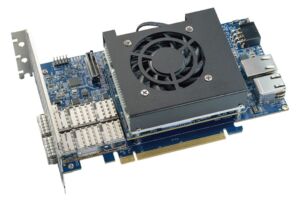
Titan S10 SOM – High Performance FPGA Module Built for the Real World
itan S10 SOM – High Performance FPGA Module Built for the Real World The Titan S10 SOM is a compact,
itan S10 SOM – High Performance FPGA Module Built for the Real World The Titan S10 SOM is a compact,
As industrial environments become increasingly demanding, the necessity of securing DRAM modules against shock and vibration grows critical, especially in
📈 Anticipating a Surge in NAND Flash Prices
📈 Anticipating a Surge in NAND Flash Prices
In the fast-paced world of technology, it’s not uncommon for a once super-fast and state-of-the-art computer to gradually become sluggish
Welcome to this comprehensive article on SSD performance, speed, and capacity. The following is the 3rd post in a series of “Understanding SSD Basics”. One of the most important characteristics and the biggest secret of the SSD (Solid State Drive) industry is how to measure the quality of the SSD?
Most the users/customers will point the Read/Write (R/W) speed as the major indicator.
Others will describe the Program/Erase (P/E) cycles as the most important feature.
Very few people will indicate the NAND Flash type (SLC, MLC, TLC or 3D-TLC) as the most relevant element.
Interested to learn more? enter the following link to read the full post.
Unveiling the Power of SSDs: Performance, Speed, and Capacity
Introduction: Welcome to this comprehensive article on SSD performance, speed, and capacity. When choosing an SSD, understanding these key factors is crucial for finding the optimal storage solution that meets your specific needs. In this article, we will explore and demystify the performance metrics associated with SSDs, including read and write speeds, random and sequential performance, as well as the impact of different capacities on overall performance. By the end of this article, you will have all the necessary information to make an informed decision.
Welcome to the first post of our series, “Understanding SSD Basics.” In this article, we will provide a comprehensive introduction to solid-state drives (SSDs) and cover the key concepts that form the foundation of SSD technology. By the end of this article, you will have a solid understanding of how SSDs work and the crucial factors to consider when evaluating their performance.
שלחו לנו וואטסאפ